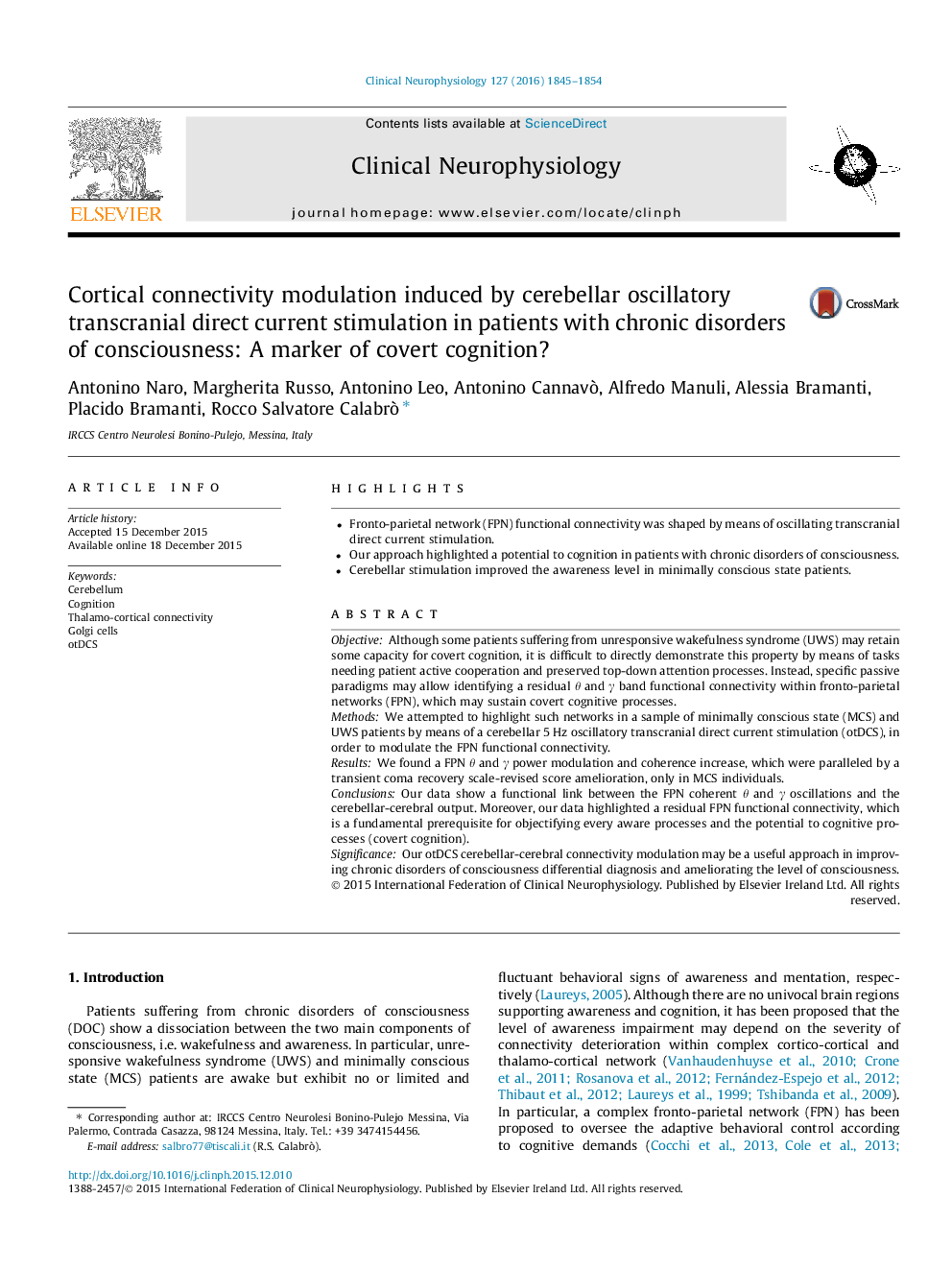| Article ID | Journal | Published Year | Pages | File Type |
|---|---|---|---|---|
| 3042897 | Clinical Neurophysiology | 2016 | 10 Pages |
•Fronto-parietal network (FPN) functional connectivity was shaped by means of oscillating transcranial direct current stimulation.•Our approach highlighted a potential to cognition in patients with chronic disorders of consciousness.•Cerebellar stimulation improved the awareness level in minimally conscious state patients.
ObjectiveAlthough some patients suffering from unresponsive wakefulness syndrome (UWS) may retain some capacity for covert cognition, it is difficult to directly demonstrate this property by means of tasks needing patient active cooperation and preserved top-down attention processes. Instead, specific passive paradigms may allow identifying a residual θ and γ band functional connectivity within fronto-parietal networks (FPN), which may sustain covert cognitive processes.MethodsWe attempted to highlight such networks in a sample of minimally conscious state (MCS) and UWS patients by means of a cerebellar 5 Hz oscillatory transcranial direct current stimulation (otDCS), in order to modulate the FPN functional connectivity.ResultsWe found a FPN θ and γ power modulation and coherence increase, which were paralleled by a transient coma recovery scale-revised score amelioration, only in MCS individuals.ConclusionsOur data show a functional link between the FPN coherent θ and γ oscillations and the cerebellar-cerebral output. Moreover, our data highlighted a residual FPN functional connectivity, which is a fundamental prerequisite for objectifying every aware processes and the potential to cognitive processes (covert cognition).SignificanceOur otDCS cerebellar-cerebral connectivity modulation may be a useful approach in improving chronic disorders of consciousness differential diagnosis and ameliorating the level of consciousness.
